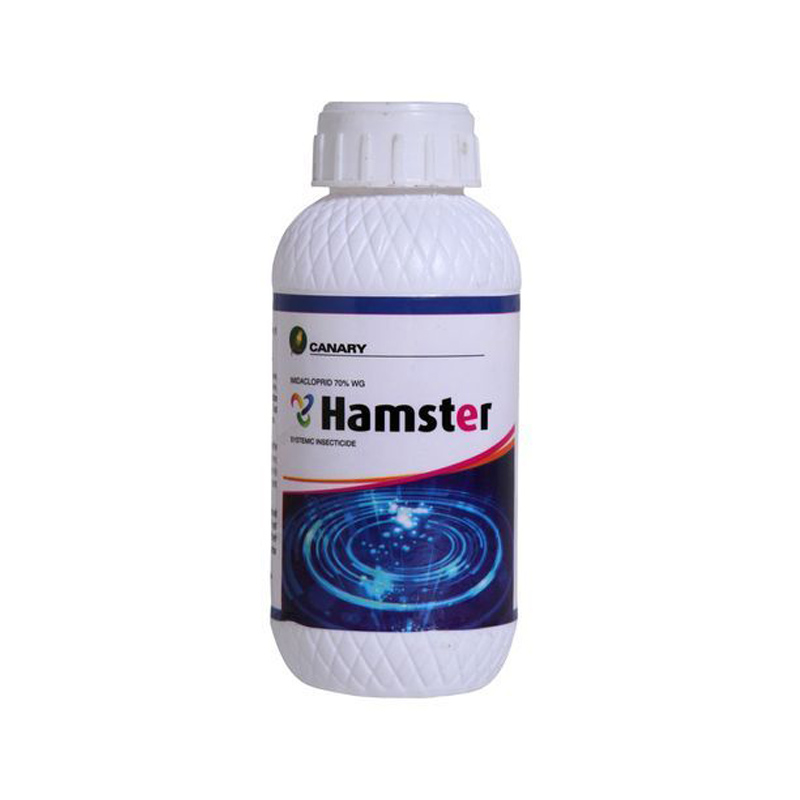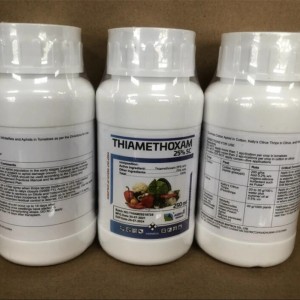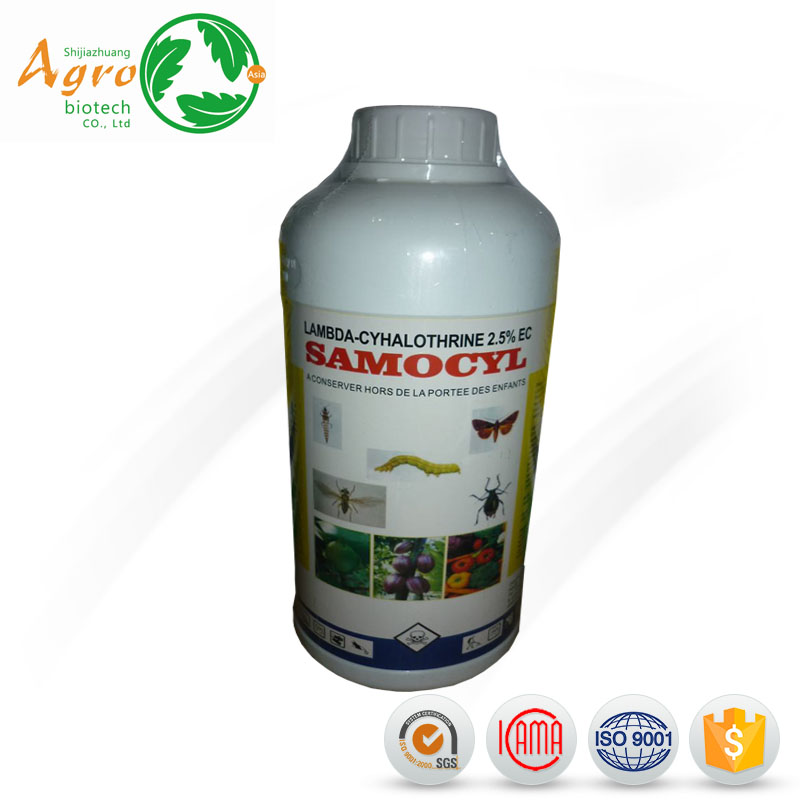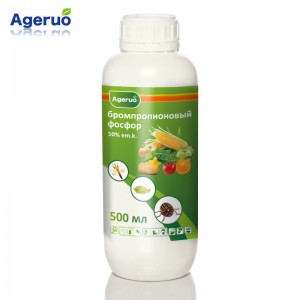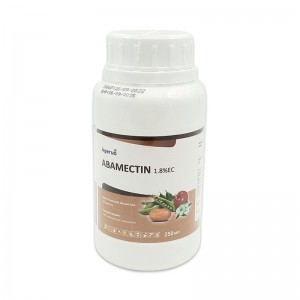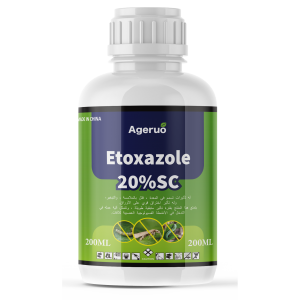Recommendations for the most effective insecticides to protect your wheat!
Below are recommendations for several major pests that damage wheat, how they do it and what they can do to control them, as well as hot-selling insecticides for each.
1. Aphids (Aphididae)
Aphids by sucking the sap of wheat leaves and spikes, so that the growth of the plant is hindered, the leaves curled, yellow, and in severe cases, will lead to short wheat plants, the seed is not full. At the same time, aphids also spread a variety of plant virus diseases.

Control measures:
Agricultural practices: Remove weeds and crop residues from fields to reduce aphid habitat.
Biological control: Using natural enemies such as ladybugs and lacewings to control aphids.
Chemical control: Spraying aphids with insecticides in the early stages of development.
Recommended insecticides:
Imidacloprid is a broad-spectrum systemic insecticide belonging to the neonicotinoid group. It works by interfering with the nervous system of the pest, causing paralysis and death. Imidacloprid is effective against a wide range of stinging mouthparts pests such as aphids, fleabites and whiteflies.
Characteristics:
High efficiency: It has high efficient killing effect on many kinds of pests.
Endosorption: The plant can conduct to the whole plant after absorption, which improves the durability of the drug effect.
Safety: Low toxicity to humans and animals, environmentally friendly.
Acetamiprid is a kind of high efficient, low toxicity, low residual neonicotinoid insecticide, which mainly produces effects on pests through poisoning by touch and stomach. It has significant control effects on a variety of stinging mouthparts pests such as aphids and whiteflies.
Characteristics:
Broad-spectrum: Effective against a wide range of pests.
Long-lasting effect: Long-lasting effect, reducing the number of applications.
Environmentally friendly: low toxicity, low residue, low impact on the environment.
Thiamethoxam is a broad-spectrum neonicotinoid insecticide with systemic and poisoning effects. It works by interfering with the nerve conduction of pests, causing them to stop feeding and eventually causing their death. It is suitable for the control of aphids, fleas, whiteflies and other pests.
Characteristics:
Rapid action: pests stop feeding quickly after contact with the agent.
Long-lasting effect: strong endosorption, long-lasting effect.
Environmental protection: low toxicity to humans and animals, friendly to the environment.
Flonicamid is a new type of insecticide, which mainly inhibits the feeding behavior of pests and gradually leads to their death. It has good control effect on aphids, fleabites, whiteflies and other piercing-sucking mouthparts pests.
Characteristics:
High selectivity: Low impact on natural enemies and beneficial organisms.
Unique action: Kills pests by inhibiting feeding.
Long-lasting effect: Long-lasting effect, reducing the number of applications.
Usage:
50% fludioxonil: Dilute 2000-3000 times for foliar spraying.
2. Mythimna separata
The larvae of sticky worm (Armyworm) nibble the leaves and stalks of wheat, causing large leaf loss, affecting photosynthesis, and leading to plant death in severe cases.

Control measures:
Agricultural practices: Reasonable crop rotation, timely removal of weeds and crop residues.
Biological control: Utilize natural enemies such as parasitic wasps.
Chemical control: Spraying insecticides at the early stage of occurrence of stick insects and at the stage of young larvae.
Recommended insecticides:
Chlorpyrifos is a broad-spectrum organophosphorus insecticide, which mainly controls pests through poisoning by touch, stomach and fumigation. It is effective against a wide range of Lepidoptera, Hemiptera and Homoptera pests.
Characteristics:
Broad-spectrum: Effective against a wide range of pests.
High efficiency: kill pests quickly, quick effect.
Long-lasting effect: Long-lasting effect, reducing the number of applications.
Method of use:
40% chlorpyrifos emulsifiable concentrate: dilute 1000-1500 times for foliar spraying.
Lambda-cyhalothrin is a synthetic pyrethroid insecticide, which kills pests mainly by touch and stomach poisoning. It has significant control effects on a wide range of pests including Lepidoptera and Hemiptera.
Characteristics:
High efficiency and broad-spectrum: It is effective to many kinds of pests.
Quick-acting: kill pests quickly, quick effect.
Long-lasting effect: Long-lasting effect, reducing the number of applications.
Usage:
2.5% high efficiency cypermethrin emulsifiable concentrate: dilute 2000-3000 times for foliar spraying.
Emamectin benzoate is a kind of bio-source insecticide, which kills pests mainly through stomach poisoning and poisoning by touch. It has significant control effect on lepidopteran pests such as stick insects and tigers.
Characteristics:
High efficiency: It has high efficient killing effect on many kinds of lepidopteran pests.
Low toxicity: low toxicity to humans and animals, environmentally safe.
Long-lasting effect: Long-lasting effect, reducing the number of applications.
Method of use:
5% Mevinphos emulsion: Dilute 2000-3000 times for foliar spraying.
Chlorantraniliprole is a new type of insecticide, which mainly interferes with the calcium ion channels of pests, leading to their paralysis and death. It is suitable for the control of lepidopteran pests such as stick insects and groundhogs.
Characteristics:
High efficiency: It has high efficient killing effect on many kinds of pests.
Low toxicity: low toxicity to humans and animals, environmentally friendly.
Long-lasting effect: Long-lasting effect, reducing the number of applications.
3. Agrotis spp. (Cutworms or Nocturnal moths)
Agrotis spp. (Cutworms or Nocturnal moths) larvae are mainly active at night, nibbling on the stems of wheat seedlings, causing seedlings to break or the whole plant to be bitten off, seriously affecting the rate of seedling formation in the field.

Control measures:
Agricultural practices: Strengthen field management, remove weeds and residual plants.
Biological control: Utilize natural enemies such as parasitic wasps.
Chemical control: Spraying insecticides at the early stage of Cutworms occurrence.
Recommended insecticides:
Chlorpyrifos is a broad-spectrum organophosphorus insecticide, which mainly controls pests through touch, stomach poison and fumigation. It is effective against a wide range of Lepidoptera, Hemiptera and Homoptera pests.
Characteristics:
Broad-spectrum: Effective against a wide range of pests.
High efficiency: kill pests quickly, quick effect.
Long-lasting effect: Long-lasting effect, reducing the number of applications.
Chlorantraniliprole is a new type of insecticide, which mainly interferes with the calcium ion channels of pests, leading to their paralysis and death. It is suitable for the control of lepidopteran pests such as stick insects and groundhogs.
Characteristics:
High efficiency: It has high efficient killing effect on many kinds of pests.
Low toxicity: low toxicity to humans and animals, environmentally friendly.
Long-lasting effect: Long-lasting effect, reducing the number of applications.
Emamectin benzoate is a kind of biogenic insecticide, which kills pests mainly through stomach poisoning and poisoning by touch. It has significant control effect on lepidopteran pests such as stick insects and tigers.
Characteristics:
High efficiency: It has high efficient killing effect on many kinds of lepidopteran pests.
Low toxicity: low toxicity to humans and animals, environmentally safe.
Long-lasting effect: Long-lasting effect, reducing the number of applications.
Phoxim is a broad-spectrum organophosphorus insecticide, which kills pests mainly through poisoning by touch and stomach. It is suitable for controlling underground pests such as tigers.
Characteristics:
High efficiency: It is highly effective in killing underground pests.
Long duration of efficacy: long-lasting efficacy, reducing the number of applications.
Broad-spectrum: Effective for many kinds of pests.
Method of use:
50% phoxim emulsifiable concentrate: dilute 1000 times liquid spray or seed dressing treatment.
4. Wheat spider (Tetranychus urticae)
Wheat spider (Wheat mite) sucks the sap of wheat leaves by stinging, resulting in yellow spots, loss of luster, and in severe cases, drying and curling of leaves, affecting photosynthesis.

Preventive measures:
Agricultural practices: crop rotation, planting insect-resistant varieties.
Physical control: watering and weeding to destroy the habitat of wheat spider.
Biological control: Utilize natural enemies such as predatory mites.
Chemical control: Spraying insecticides at the early stage of wheat spider infestation.
Recommended insecticides:
Abamectin is a biogenic insecticide, which kills pests mainly through stomach poisoning and poisoning by touch. It is suitable for controlling wheat spider and other pests.
Characteristics:
High efficiency: Highly effective in killing a variety of pests.
Low toxicity: low toxicity to humans and animals, environmentally friendly.
Long-lasting effect: Long-lasting effect, reducing the number of applications.
Usage:
1.8% abamectin emulsion: dilute 2000-3000 times for foliar spraying.
Bifenazate is a selective acaricide, killing pests mainly by touch. It is suitable for controlling wheat spider and other pests.
Characteristics:
High selectivity: low impact on natural enemies and beneficial organisms.
High efficiency: It has high efficiency to kill wheat spider and other pests.
Long-lasting effect: Long-lasting effect, reducing the number of applications.
Spirodiclofen is a new type of acaricide, which mainly kills pests by interfering with their growth and development process. It is suitable for controlling wheat spider and other pests.
Characteristics:
High efficiency: It is highly effective in killing wheat spider and other pests.
Long-lasting effect: Long-lasting effect, reducing the number of applications.
Environmentally friendly, low toxicity.
Usage:
24% Spirodiclofen Suspension: Dilute 2000-3000 times for foliar spraying.
Pyridaben is a broad-spectrum acaricide, killing pests mainly by touch. It is suitable for controlling wheat spider and other pests.
Characteristics:
Broad-spectrum: Effective against a wide range of pests.
High efficiency: It has high efficient killing effect on wheat spider and other pests.
Long-lasting effect: Long-lasting effect, reducing the number of applications.
Etoxazole is a new type of acaricide, which kills pests by interfering with their growth and development. It is suitable for controlling wheat spider and other pests.
Characteristics:
High efficiency: It is highly effective in killing wheat spider and other pests.
Long-lasting effect: Long-lasting effect, reducing the number of applications.
Environmentally friendly, low toxicity.
5. Wheat leaf wasp (Cephus pygmaeus)
The female of Wheat stem sawfly (Wheat stem sawfly) lays eggs inside the wheat stalks and the larvae feed inside the stalks, destroying the conducting tissues and causing the stalks to become brittle and prone to collapse, affecting the yield.

Control measures:
Agricultural practices: reasonable crop rotation, timely removal of weeds and crop residues.
Biological control: Utilize natural enemies such as parasitic wasps.
Chemical control: Spray insecticides at the early stage of wheat leaf wasp development.
Recommended insecticides:
Chlorantraniliprole is a new type of insecticide, which mainly interferes with the calcium ion channels of pests, leading to their paralysis and death. It is suitable for controlling lepidopteran pests such as stick insects and tigers.
Characteristics:
High efficiency: It has high efficient killing effect on many kinds of pests.
Low toxicity: low toxicity to humans and animals, environmentally friendly.
Long-lasting effect: Long-lasting effect, reducing the number of applications.
Emamectin benzoate is a kind of biogenic insecticide, which kills pests mainly through stomach poisoning and poisoning by touch. It has significant control effect on lepidopteran pests such as stick insects and tigers.
Characteristics:
High efficiency: It has high efficient killing effect on many kinds of lepidopteran pests.
Low toxicity: low toxicity to humans and animals, environmentally safe.
Long-lasting effect: Long-lasting effect, reducing the number of applications.
Chlorpyrifos is a broad-spectrum organophosphorus insecticide, which mainly controls pests through poisoning by touch, stomach and fumigation. It has significant control effects on a variety of lepidopteran, hemipteran and homopteran pests.
Characteristics:
Broad-spectrum: Effective against a wide range of pests.
High efficiency: kill pests quickly, quick effect.
Long-lasting effect: Long-lasting effect, reducing the number of applications.
Lambda-cyhalothrin is a synthetic pyrethroid insecticide, which kills pests mainly by touch and stomach poisoning. It has significant control effects on a wide range of pests including Lepidoptera and Hemiptera.
Characteristics:
High efficiency and broad-spectrum: It is effective to many kinds of pests.
Quick-acting: kill pests quickly, quick effect.
Long-lasting effect: Long-lasting effect, reducing the number of applications.
Through the rational use of the above control measures and insecticides, wheat pests can be effectively controlled to ensure the healthy growth of wheat and a good harvest.
